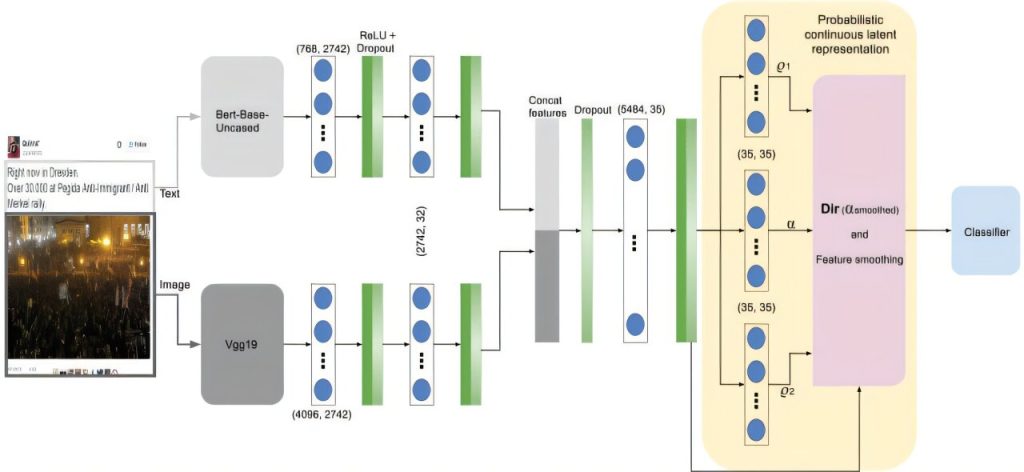The Escalating Threat of Fake News in the Age of AI
The proliferation of fake news across social media platforms has become a pressing societal concern. Fueled by the rapid advancements in artificial intelligence (AI) and the reduction of fact-checking resources by major platforms, disinformation campaigns are becoming increasingly sophisticated and harder to detect. This poses a significant threat to democratic processes, public health, and social cohesion, particularly during elections when malicious actors can exploit the vulnerabilities of online information ecosystems to manipulate public opinion. The ease with which fabricated content can be generated and disseminated necessitates robust countermeasures to combat this growing menace.
Harnessing AI’s Power to Combat Disinformation: Enter SmoothDetector
Researchers at Concordia University’s Gina Cody School of Engineering and Computer Science have developed a novel AI-powered model called SmoothDetector to address the challenge of fake news detection. This innovative approach leverages the strengths of both probabilistic algorithms and deep neural networks to identify subtle patterns and uncertainties within multimodal content, encompassing text and images. Trained on annotated data from prominent social media platforms like X (formerly Twitter) and Weibo, SmoothDetector aims to discern the telltale signs of fabricated information, offering a more nuanced and reliable assessment compared to previous methods. The researchers are also actively exploring the integration of audio and video analysis capabilities to further enhance the model’s effectiveness across diverse media formats.
Unveiling the Mechanics of SmoothDetector: A Probabilistic Approach to Disinformation Detection
SmoothDetector’s distinctive feature lies in its probabilistic approach to fake news detection. Unlike traditional models that rely solely on deterministic classifications, SmoothDetector incorporates a probabilistic algorithm to quantify the uncertainty inherent in online content. This enables the model to capture the ambiguities and nuances often present in real-world scenarios, where information can be incomplete, contradictory, or intentionally misleading. By acknowledging the possibility of error and incorporating uncertainty into its decision-making process, SmoothDetector provides a more robust and reliable assessment of an item’s authenticity. This approach distinguishes it from earlier models that often struggle with ambiguous cases, particularly in fast-evolving situations like breaking news events.
Contextual Understanding and Multimodal Integration: Enhancing Accuracy in Fake News Detection
A key innovation of SmoothDetector is its ability to understand the context and relationships within multimodal data. Through positional encoding, the model learns the significance of words within a sentence and the spatial relationships between elements in an image. This contextual understanding allows SmoothDetector to grasp the overall meaning and coherence of a piece of content, enhancing its ability to identify inconsistencies or manipulations that may indicate fabrication. The integration of multiple modalities, such as text and images, provides a more comprehensive view of the information, enabling the model to detect discrepancies that might be missed when analyzing individual modalities in isolation. This multimodal approach is crucial for addressing the increasingly sophisticated nature of fake news, which often involves the manipulation of multiple media formats.
Addressing the Limitations of Previous Models: A More Nuanced Approach to Authenticity Assessment
Earlier fake news detection models often struggled with multimodal content, primarily focusing on individual modalities like text or images in isolation. This limitation could lead to misclassifications, especially when a post contained a mixture of accurate and fabricated information. SmoothDetector overcomes this challenge by analyzing multiple modalities simultaneously, capturing the complex interplay between text, images, and potentially audio and video in the future. The probabilistic nature of the model further enhances its ability to handle uncertainty and ambiguity, providing a more nuanced judgment of an item’s authenticity rather than a simple binary classification. This nuanced approach is crucial for navigating the complex landscape of online information, where the line between truth and falsehood can be blurred.
The Future of SmoothDetector: Expanding Capabilities and Platform Adaptability
While SmoothDetector represents a significant advance in fake news detection, the researchers acknowledge the need for further development. Expanding the model’s capabilities to encompass audio and video analysis is a key priority, enabling a truly comprehensive approach to multimodal disinformation detection. Furthermore, ensuring the model’s adaptability across various social media platforms beyond X and Weibo is essential for its widespread applicability. The researchers are optimistic about the potential of SmoothDetector to evolve into a powerful tool for combating the pervasive threat of fake news, empowering individuals and organizations to navigate the online information landscape with greater discernment and resilience. The implications of this research are significant, offering a promising avenue for mitigating the harmful effects of misinformation and promoting a more informed and trustworthy digital environment.


